The combination of increasing extreme weather and social media has created, if you’ll pardon the pun, a perfect storm for sharing photos that show post-hurricane devastation (both real and fake). Many of them take the form of of a shark swimming through flooded city streets. For better or for worse, I’m known as “the shark guy” among my friends and family, which means that every time one of these pictures pops up, I get it e-mailed to me on the order of 50-100 times.
With the hopes of lightening my inbox and edu-ma-cating our loyal readers, presented below is a simple guide to determine if any given “shark after the storm” photo is fake.
1) Use your vast knowledge of shark biology to determine if a shark that size of that species could possibly be in water that deep.
The image above was one of the first “shark after a storm” pictures to go viral. It claimed to show a great white shark swimming through the flooded streets of Puerto Rico after Hurricane Irene in 2011. Take a look at how high the car’s side view mirror is above the water. That means the water level, while more than high enough to be destructive to cars and buildings, is not nearly high enough for a shark of that size to be comfortably swimming in. Also, great white sharks are not typically found in the Caribbean in August.
2) Try to find other images of the place where the shark supposedly is, and try to find other images of that species of shark. Photoshop users aren’t creating their images out of thin air. The process typically involves inserting an existing photo of a shark into an existing photo of a city. They often aren’t looking too hard to find the base images- you can sometimes find them on the first page or two of Google Image search results.
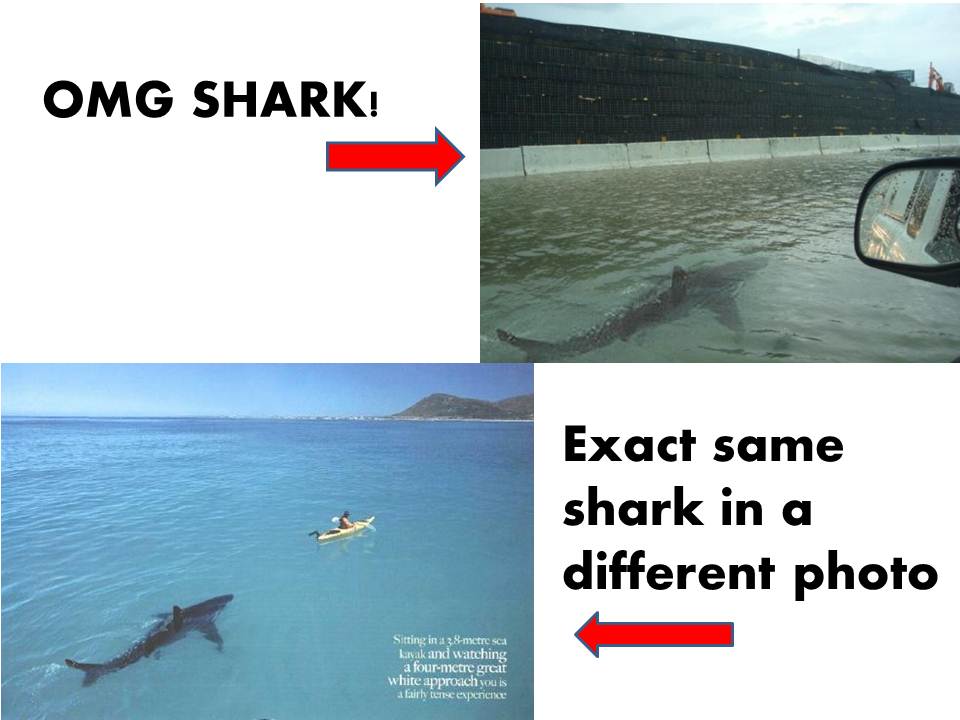
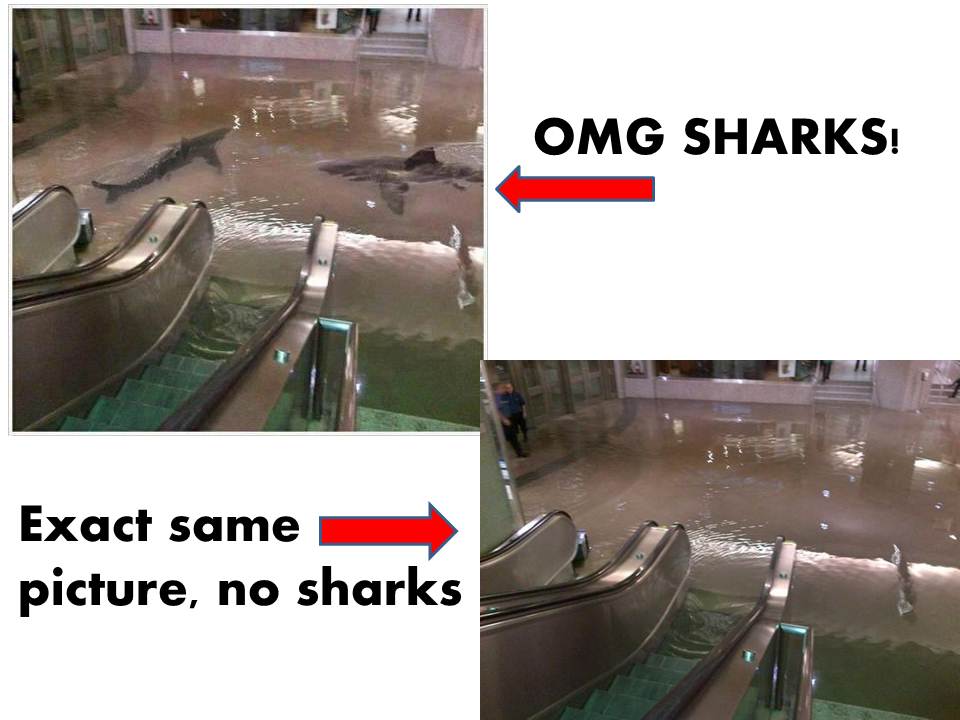
3) Upload the image itself to Google Image and see what pops up. Did you know you can use Google Image search to look not for a keyword, but for a photo itself? Really, you can. And it’s amazing. Check it out:
The process of searching by image can usually answer whether or not a photo is fake pretty quickly. Take this picture, for example:
While it originally claimed to be a shark tank collapsing in Kuwait, it popped up again after Hurricane Sandy. Anyway, here’s what you get if you “search by image”:
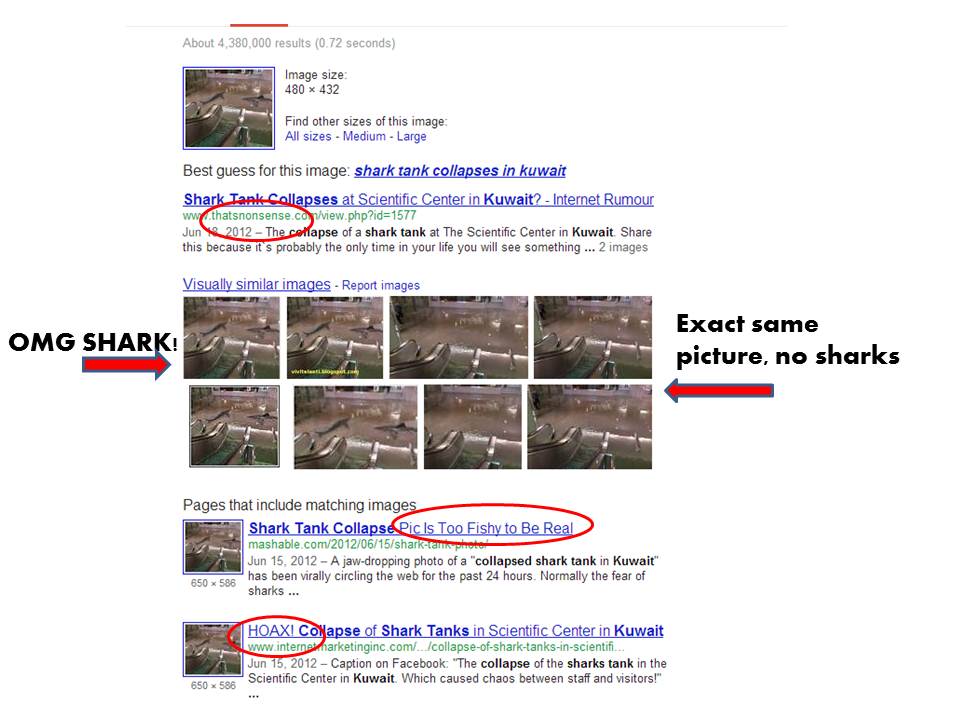
4) Check Snopes. By the time you’ve seen a “shark after the storm” picture, they’ve probably already done steps 1-3 and posted a thoroughly researched article explaining exactly why the photo is fake.
5) Just assume that the picture is a fake. You’ll be right most of the time. To the best of my knowledge, there has never been a confirmed photo of a shark swimming in city streets following a storm, though please feel free to correct me in the comments.A shark tank did recently collapse (the sharks died quickly and were never swimming through the building), and a flood did result in sharks entering a golf course’s water hazard, but neither of those are the same thing as a shark swimming through the streets of a city.
Storms cause destruction, and increasingly severe storms will cause increasingly severe destruction. Humans are hard-wired to be morbidly fascinated by such things- I know that I’m not the only one who couldn’t look away from CNN and my twitter feed during Hurricane Sandy’s landfall. I fear that fake images of storm destruction are here to stay, but I hope that you’re now armed with the knowledge to detect them and avoid looking like a fool.
Author’s note: It’s extremely difficult in the case of “viral images” to determine who took the original photo, which is why I have not attributed most of these to a photographer. If anyone knows (and can prove) who took any of the original photos, I’ll happily add the photographer’s name to the photo captions.
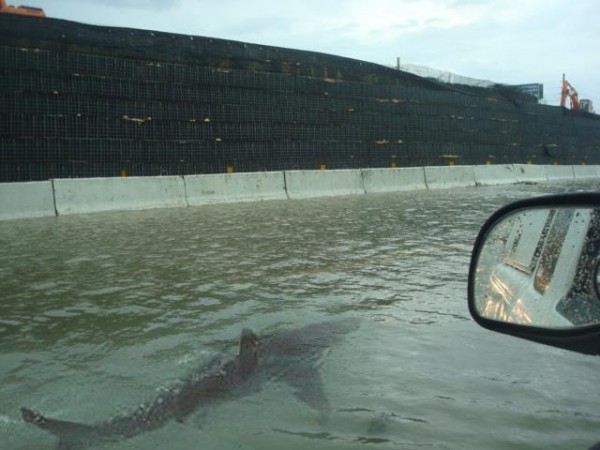
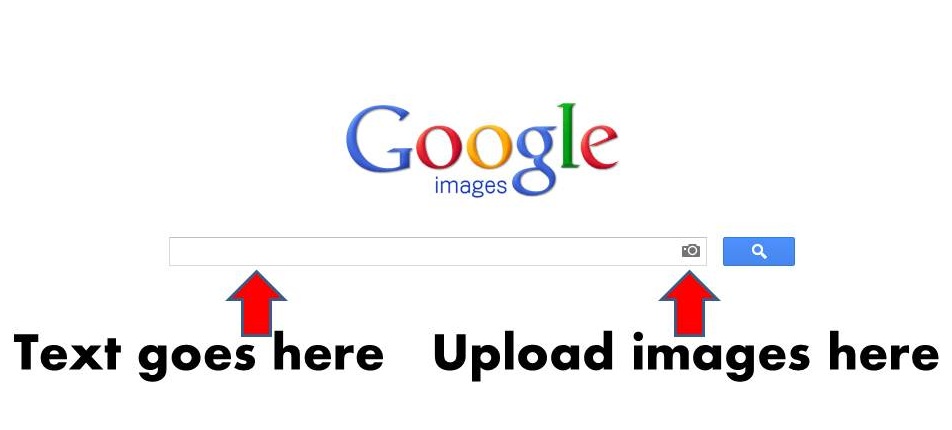
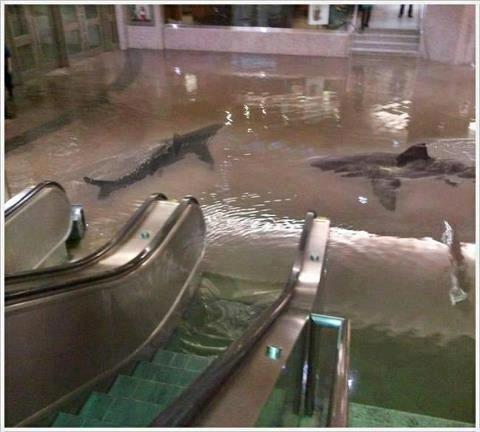
Wow! I think the biggest take away from this is that you can SEARCH GOOGLE BY PICTURE!
And to think that I considered myself Internet Op LvL 32.
Also note that the shark in Puerto Rico, the shark chasing the kayaker, and the shark on the left in the mall picture are all the exact same shark.
The PR, escalator on the left shark clearly gets around and might be considered a menace! I don’t trust that blood thirsty shark!